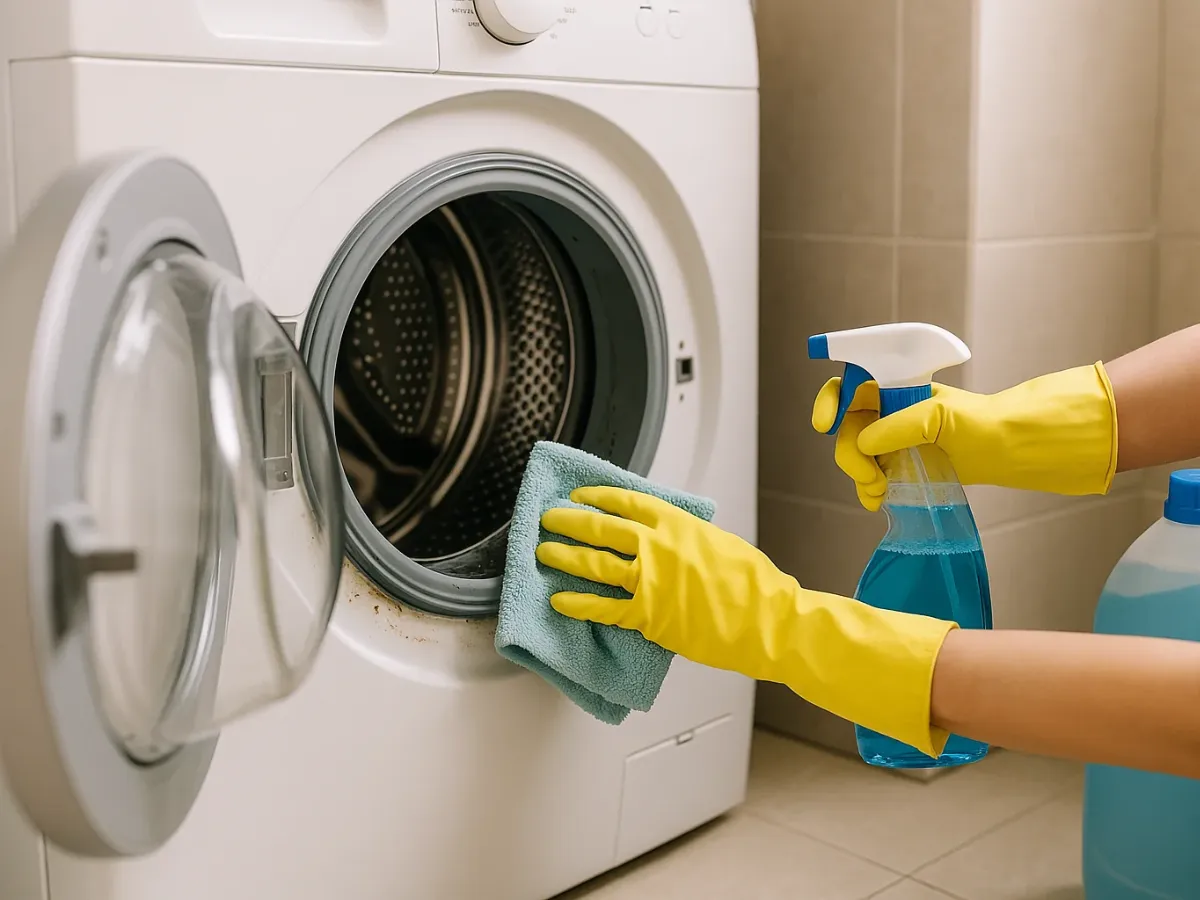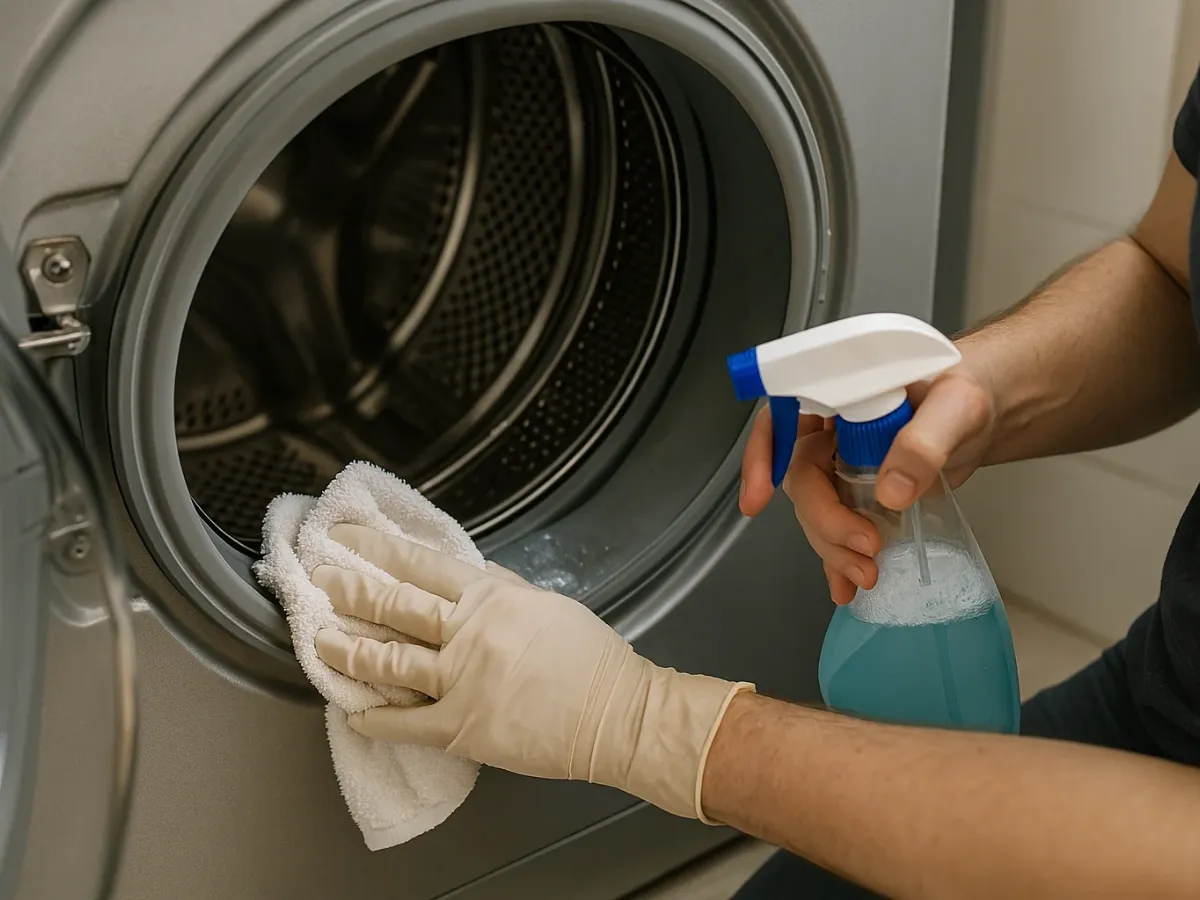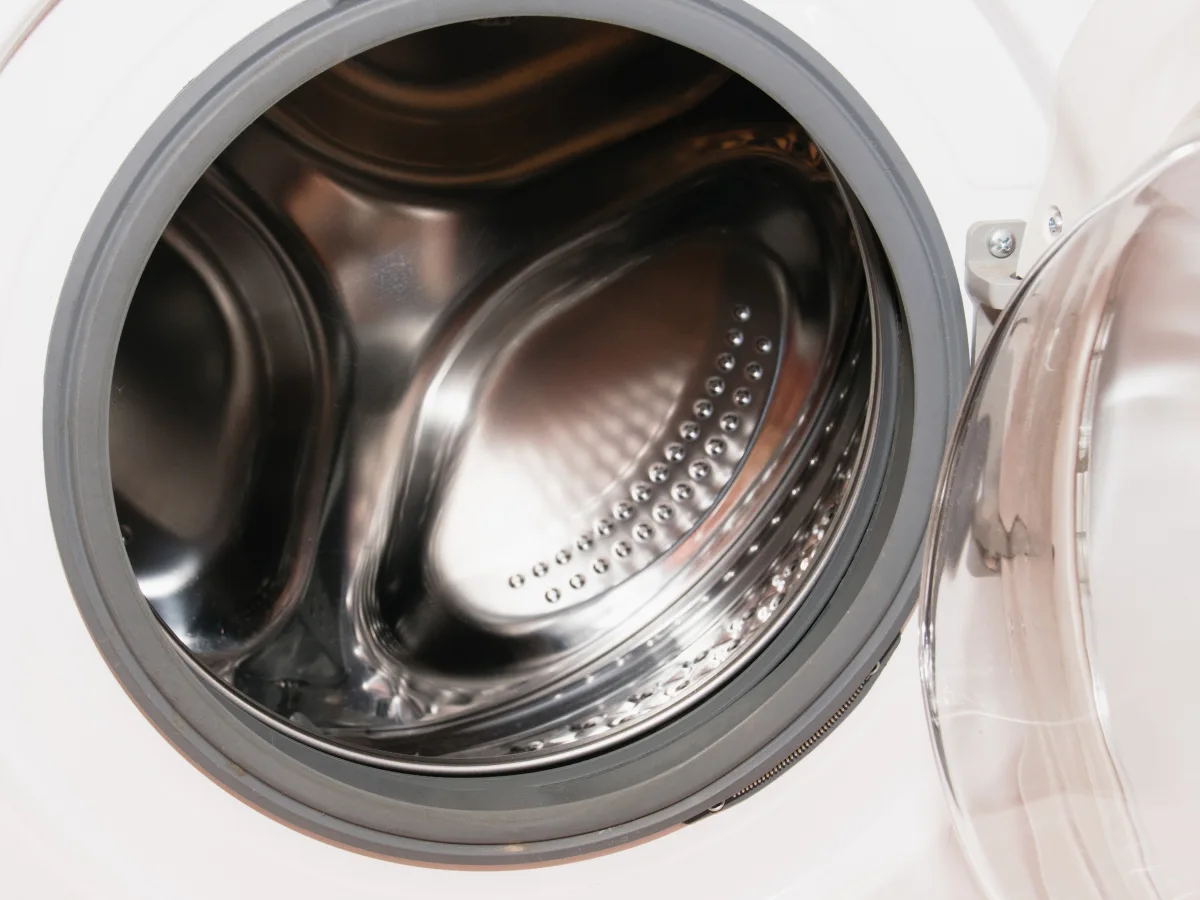Ultimate Guide: How to Clean Inside Washing Machines (Drum, Gasket, Filter...)

Your washing machine is a silent hero in the home, working tirelessly to leave your clothes clean and fresh. But have you ever stopped to think if the machine itself needs cleaning? Over time, the inside of the washer accumulates residues from detergent, fabric softener, limescale, lint, and even mold and bacteria, especially in damp, hidden areas. This buildup can not only generate bad odors that transfer to your laundry but can also affect the appliance's performance and reduce its lifespan. Learning how to clean inside washing machines is an essential maintenance task.
Fortunately, keeping your washing machine spotless inside is easier than it seems. With some common household ingredients or specific products, you can remove dirt, disinfect, and prevent future problems. In this complete guide, we'll walk you step-by-step through cleaning each key component: drum, gasket, drawer, and filter.
Why is Regularly Cleaning Your Washing Machine Crucial?
Ignoring the internal cleaning of your washing machine can lead to several problems:
- Bad Odors: Constant moisture, soap scum, and trapped dirt are the perfect breeding ground for bacteria and mold, the main culprits of musty or damp smells in the machine and on freshly washed clothes.
- Residue on Clothes: Buildup of undissolved detergent, fabric softener, or limescale can leave whitish marks or residues on your garments, especially on dark clothes.
- Visible (and Hidden) Mold: The door gasket and detergent drawer are prone to black or greenish mold, which is not only unsightly but can release harmful spores (allergies, respiratory problems).
- Reduced Washing Efficiency: A dirty machine with partially clogged filters or hoses won't wash as well.
- Breakdowns and Shorter Lifespan: Limescale can damage the heating element, and blockages in the filter or pump can strain the motor. Good maintenance prevents breakdowns.
It's recommended to perform a deep clean of the interior every 1 to 3 months, depending on usage frequency and the hardness of your water.
Comprehensive Cleaning: Step-by-Step Guide
For a complete clean, we'll address the four key areas:
1. Cleaning the Drum: The Heart of the Washer
This is where the magic (and dirt) happens. An empty wash cycle with the right products is the best way to clean and disinfect it.
- Vinegar and Baking Soda Method (Natural & Effective):
- Ensure the washing machine is completely empty.
- Pour half a cup of baking soda directly into the drum.
- Add 1 or 2 cups of white vinegar (cleaning grade) into the detergent drawer (compartment II) or also directly into the drum.
- Select a long wash cycle (like Cotton) and the highest possible temperature your machine allows (ideally 60°C or 90°C / 140°F or 194°F). Heat boosts cleaning and disinfection.
- Run the full cycle. The combination of vinegar (acid) and baking soda (mild alkali) will help dissolve soap scum, limescale, and eliminate odors.
- (Optional) When finished, you can wipe the inside of the drum with a clean cloth to dry and remove any loose residue.
Discover more about cleaning with vinegar and the uses of baking soda.
- Bleach Method (Powerful Disinfection - Caution!):
- Empty washer.
- Pour approximately half a cup (about 120-150 ml) of bleach into the detergent compartment (or bleach compartment if it has one). Do not add detergent or other products!
- Select a long cycle with hot water (60°C / 140°F is sufficient).
- Run the full cycle.
- VERY IMPORTANT!: When finished, run another full cycle with water only (no detergent or bleach) to ensure all bleach residue is removed, which could damage your next load.
- Ventilate the room well during and after the process.
Remember the precautions when using bleach.
- Commercial Washing Machine Cleaners: Specific products (tablets, liquids) designed to clean the drum are available. Follow the manufacturer's instructions. They are usually used with an empty cycle at high temperature.

2. Cleaning the Door Gasket: The Mold Hideout
This rubber seal is crucial for water tightness, but its folds are a magnet for moisture, soap scum, and especially black mold.
- Frequency: Clean it thoroughly at least once a month.
- Products:
- Mild Option: Warm water with neutral soap or a 1:1 mix of water and white vinegar.
- Mild Mold/Dirt Option: Baking soda and water paste.
- Persistent Mold Option: VERY diluted bleach (1 part bleach / 10-15 parts water) or hydrogen peroxide. Wear gloves and ventilate!
- Procedure:
- Put on gloves.
- Wipe with a dry cloth to remove loose debris.
- Carefully pull back the folds of the gasket.
- Moisten a cloth or old toothbrush with the chosen cleaning solution.
- Thoroughly clean the entire gasket, paying close attention to the inside folds where mold hides.
- If using bleach, let sit for only 5-10 minutes.
- Rinse VERY WELL by wiping several times with a clean cloth dampened only with water.
- Dry COMPLETELY with a dry cloth, ensuring no moisture remains in the folds.
We have a detailed specific guide on how to clean the washing machine rubber seal.
3. Cleaning the Detergent Drawer: Goodbye Sticky Residue
Residues of undissolved powder detergent, sticky fabric softener, and sometimes mold accumulate here.
- Remove It: Most drawers can be fully removed (check your washer's manual, sometimes you need to press a tab).
- Soak (Optional): If very dirty, soak it in a basin with hot water and white vinegar for 30 minutes.
- Scrub: Use an old toothbrush to scrub and remove all residues from the compartments (pre-wash I, wash II, softener). Pay attention to corners and the upper water inlets (often cleaned with the drawer removed).
- Rinse and Dry: Rinse well under the tap and dry completely before putting it back.
4. Cleaning the Pump Filter: Preventing Blockages
This is vital for proper water drainage and preventing pump damage.
- Frequency: Clean it every 2-3 months at minimum.
- Location: Usually at the bottom front, behind a small door.
- Process (Unplug Washer First!):
- Place towels/container underneath.
- Open the access panel.
- Slowly unscrew the filter (water will come out).
- Remove lint, hair, coins, buttons...
- Clean it under the tap.
- Check the housing for more debris.
- Screw it back in tightly.
If your washer isn't draining, a clogged filter is the most common cause.
Preventive Maintenance: Stop Dirt Coming Back!
- Leave the Door Open: After each wash, leave the washer door (and drawer) ajar to allow the interior to air out and dry, preventing the moisture that encourages mold.
- Use the Correct Detergent Dose: Avoid excess that creates residue.
- Quick Gasket Wipe: Wipe the rubber seal with a dry cloth after each use.
- Perform Deep Cleaning Periodically: Don't wait until it smells bad or you see mold. Clean the drum, gasket, drawer, and filter every few months.
Additionally, a good wash ensures no residue is left on your clothes. If unsure, review how to wash white clothes or dark clothes.
Frequently Asked Questions about Cleaning Washing Machines
What to use to clean the inside of a washing machine?
White vinegar, baking soda, diluted bleach (with caution), or specific commercial cleaners.
What is the best way to clean the inside of my washing machine?
Regular cleaning of the gasket, drawer, and filter, plus an empty hot cycle with vinegar/baking soda or a specific cleaner.
How to clean the inside of the washing machine with vinegar and baking soda?
Pour 1 cup vinegar in drawer/drum and 1/2 cup baking soda in the drum. Run a long, hot cycle (60-90°C / 140-194°F).
How to do a washing machine drum clean?
With washer empty, add cleaner (vinegar, soda, bleach, or commercial product) and run drum clean cycle or hottest cotton cycle.
Keeping your washing machine clean inside is as important as the laundry you do in it. With regular cleaning and simple maintenance habits, you'll ensure it runs efficiently, prevent bad odors, extend its lifespan, and guarantee your clothes always come out truly clean and fresh.
Washers Always Ready? That's LaColada!
At LaColada Self-Service Laundry Ponferrada, we take hygiene and maintenance very seriously. Our industrial washing machines undergo regular checks and cleaning to ensure they are always in perfect condition, free from odors, mold, and residues. You can trust that your clothes will be washed in an impeccable environment with maximum efficiency!
Experience Professional Cleaning at LaColada!
Sebastián R.
More than 10 years at the helm of Lacolada Lavanderia Autoserivico Ponferrada and repairing industrial and domestic machinery in my spare time. You won't find unverified theories from the internet here, just real solutions tested by someone who gets their hands dirty every day.
More Cleaning and Maintenance Tips

Energy Ratings in Washing Machines: Complete Guide (A-G)
Understand the new energy label and choose the most efficient washer.

How to Clean the Washing Machine Rubber Seal (Mold and Dirt)
Effective steps to remove mold and dirt from the gasket.

How to Clean Your Washing Machine with Vinegar: Easy & Effective Guide
A natural method to disinfect and eliminate odors.